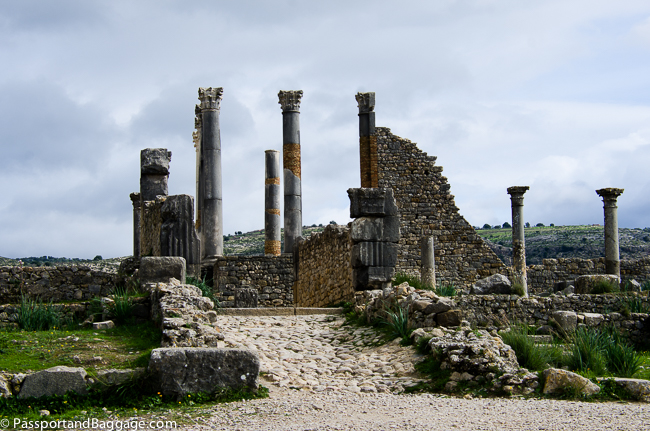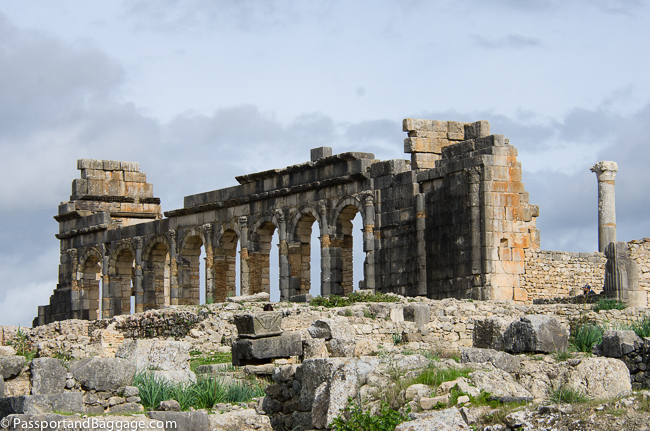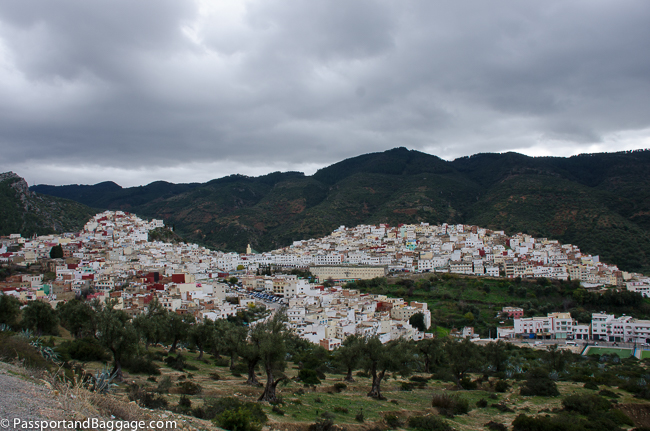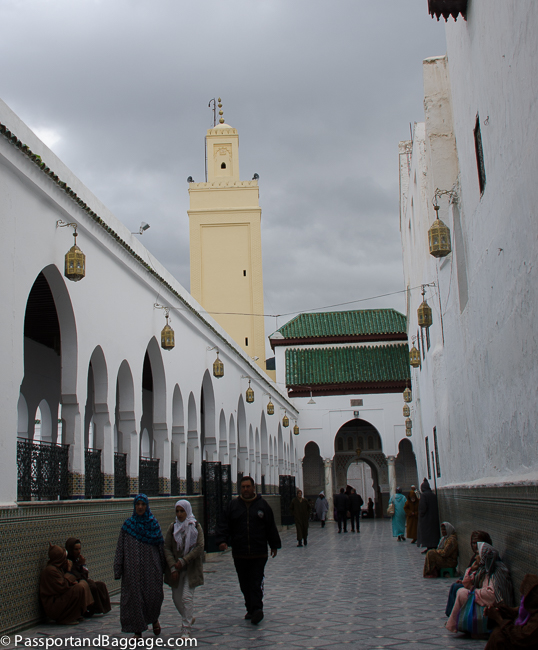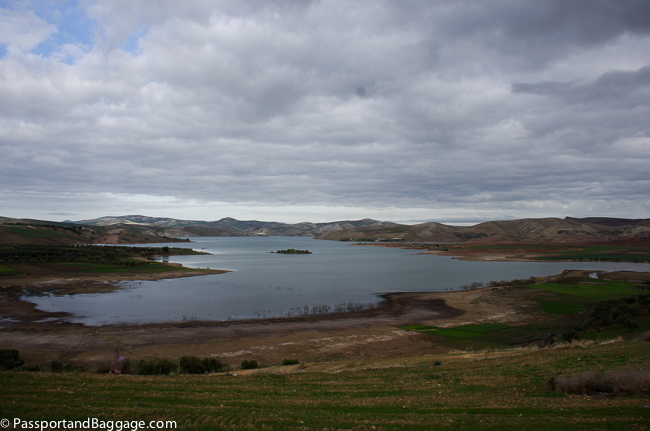December 20, 2019
Volubilis
Volubilis was founded by the Berber people in the 3rd century BCE and was part of Mauretania. Mauretania is the Latin name for a region in ancient Northwest Africa. It stretched from central present-day Algeria westwards to the Atlantic and included northern Morocco.
After the fall of Carthage, the kingdom of Volubilis became a client state of Rome. King Juba was the Roman founder and expander of Volubilis, and despite being a Berber he was married to the daughter of Mark Antony and Cleopatra and had very Roman tastes regarding architecture.
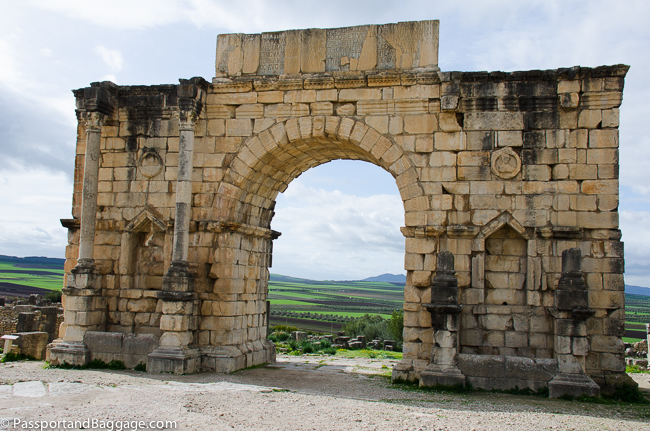
The Triumphal Arch was built by the Volubilis town council in honor of Emperor Caracalla and his mother Julia Domna in 217 CE. It was meant to thank them for having bestowed upon the inhabitants of Volubilis, Roman citizenship and tax exemption via the “Edict of Caracalla” or the Constitutio Antoniniana
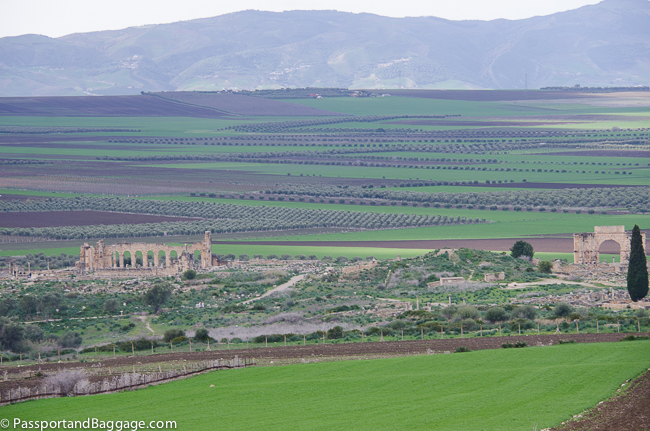
Built on a shallow slope below the Zerhoun mountain, Volubilis stands on a ridge above the valley of Khoumane and overlooks a rolling fertile plain.
In 44 CE Claudius annexed Mauretania directly as a Roman province and placed it under an imperial governor. At this point in its history, it began to grow rich exporting grain, olive oil and wild animals for use in gladiatorial spectacles to the rest of the Empire.
By the 2nd century, the city was one of the Empire’s most important outposts with around 20,000 residents. however, in 285 Volubilis was overrun by local tribes and was never re-captured by Rome. The city continued to be occupied for centuries. There are Christian inscriptions dating to the 5th and 6th centuries, and by the time the Arabs arrived, it was being occupied by the Awraba, a Berber tribe that originated in Libya.
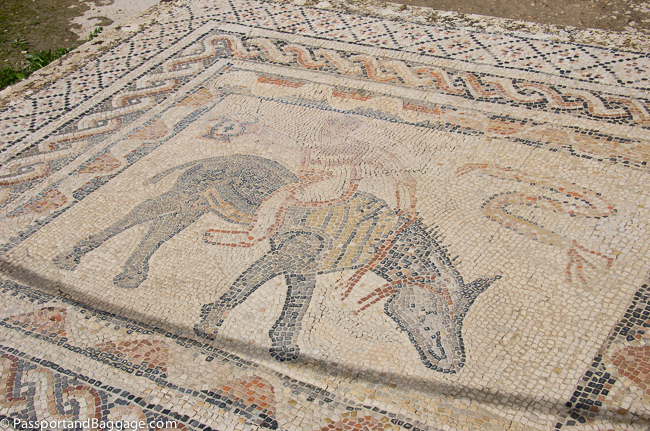
There are several mosaics still in-situ at Volubilis, but I felt they were not up to the art form of mosaics I have seen elsewhere. They were somewhat juvenile in their artistic endeavors.
In the late 8th century, Volubilis became the seat of Idris ibn Abdullah, the founder of the Idrisid dynasty and the Moroccan state.
Although it is most likely people continued to live around the site, it appears to have been finally and completely abandoned by the 14th century.
The ruins remained intact until the mid-18th century when they were largely destroyed by the Lisbon earthquake. In the following decades, Moroccan rulers looted the ruins for their marble, which was used in the construction of several imperial buildings in Meknes. The ruins were only identified as those of the ancient city of Volubilis in the late 19th century when they were partially excavated by French archaeologists while Morocco was a French protectorate.
In 1997, Volubilis was named a UNESCO World Heritage Site.
Moulay Idriss Zerhoun
Easy to see from Volubilis is the hill town of Moulay Idriss Zerhoun. The town is one of Morocco’s most important pilgrimage sites.
Situated on Mount Zerhoun, Moulay Idriss Zerhoun (often called, simply Moulay Idriss) gets its name from both the mountain and its founder, Moulay Idriss el Akbar, a sixth-generation descendant of the Islamic Prophet Muhammad. Today, he is considered Morocco’s most revered wali (spiritual guide/ protector).
Idriss sought refuge in present-day Morocco after being forced into exile from Medina and persecuted for anti-Abbasid activities.
The Abbasid dynasty was the third of the Islamic caliphates to succeed Muhammad. It was founded by a dynasty descended from Muhammad’s uncle, Abbas ibn Abdul-Muttalib (566–653 CE), which is where it gets its name.
Idriss united the Berber tribes of this area in Morocco by claiming descent from Muhammad. He is now considered to be the founder and leader of Morocco’s first Islamic dynasty, called the Idrisid dynasty, which he ruled from 788 to 791.
While Idris first came to power in Volubilis, he built his capital city higher on the mountain as it was easier to defend. Stones from Volubilis were used to help build this new capital.
Idris was originally buried at Volubilis but after his death, his body was moved to Moulay Idriss Zerhoun where his tomb can be viewed only by believers.
The town’s holy status meant it was closed to non-Muslims until 1912. It wasn’t until 2005 that non-Muslims were allowed to stay overnight in the town. It was King Mohammed VI who decreed that all visitors could enter the holy town. The move was part of the King’s Western-Moroccan friendship plan meant to make Moulay Idriss better known in the Western world.
As you wander the square the smells from grills serving kefta are divine and makes it worth a stop for a few skewers.
Sidi Chahed Dam
Along the road from Fez to Volubilis, you pass the Sidi Chahed Dam and Reservoir. Almost unknown to most Moroccans, and creating one of the largest lakes in Morocco, this massive dam can supply over 30 million gallons of backup tap water to the city of Meknes, and irrigation for about 90 farming communities.

